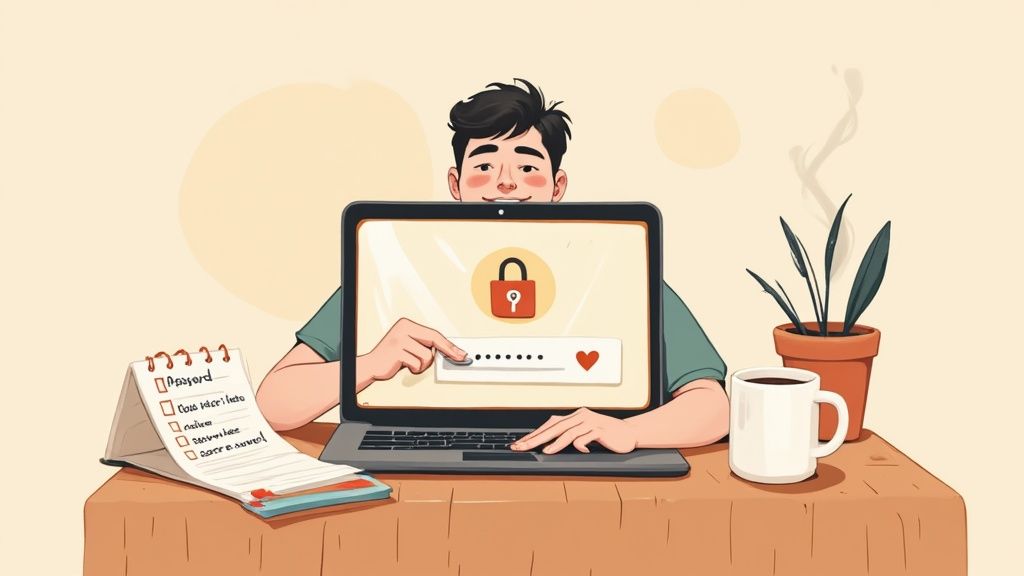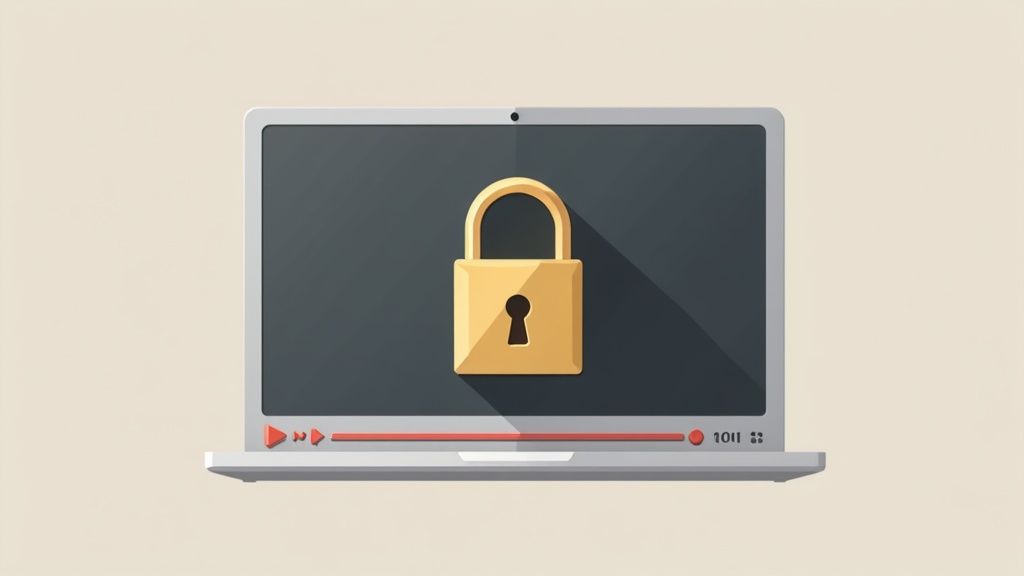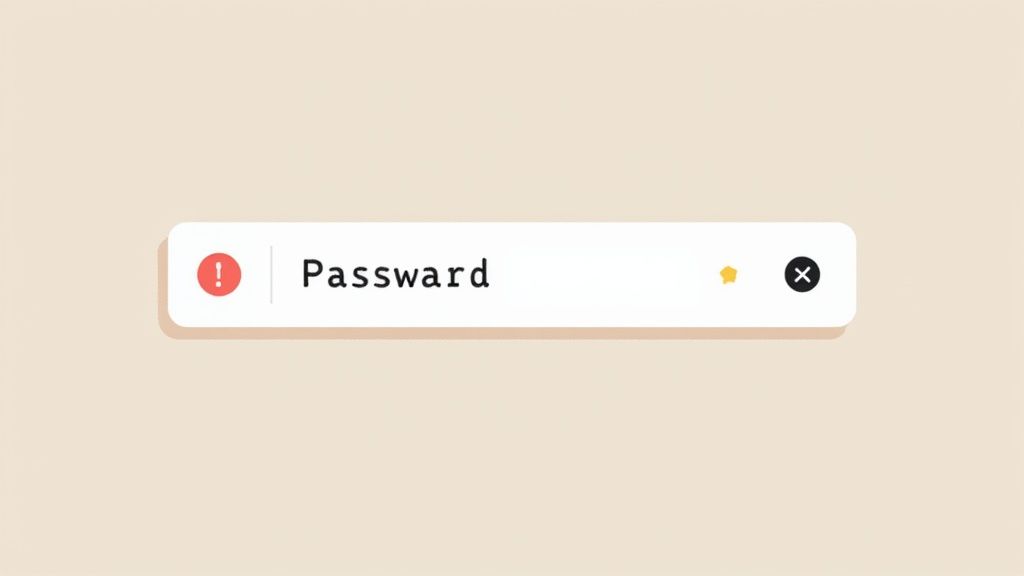How to Protect Video With Password: Real Security Guide

Published : Jul 6, 2025
Written by: Madeson Sykes
14 minutes read
Why Smart Creators Are Protecting Their Videos Now

Let’s be honest, your video content is probably more at risk than you think. I’ve spoken with so many creators who believed their videos were safely tucked away in “private” settings, only to discover them floating around the internet without their consent. A photographer friend of mine, for example, shared a client gallery using what she thought were secure privacy settings on a popular platform. She was shocked to find the entire gallery, watermarks scrubbed, on a competitor’s site just weeks later. This isn’t just a minor inconvenience; it’s a direct threat to your livelihood and professional reputation.
And this isn’t some rare occurrence. Another creator I know, a fitness instructor, was offering online courses using unlisted videos. He thought he was being clever, avoiding the cost of dedicated platforms. But then students started sharing the links, essentially giving away free access to his paid content. He lost hundreds in potential earnings before he caught on. These stories are more common than you might imagine, and they underscore the serious financial consequences of weak video security. Industry analysis reveals a staggering 38% jump in video content theft compared to previous years. This alarming trend is pushing creators and businesses to ramp up their security measures, with password protection becoming a go-to solution. Surveys also show that 67% of businesses faced unauthorized access attempts to their video content that same year, painting a clear picture of the widespread risk. Want more details on these stats? Check this out.
Standard privacy settings often just aren’t enough. “Unlisted” or “private” on many platforms really means “a little harder to find,” not truly secure. How can you tell if your current setup is leaving you exposed? Unexpected traffic spikes on videos you haven’t been promoting are a big clue. Finding your content reposted without your permission is another glaring red flag. Protecting your videos with a password provides an essential extra layer of control, making sure only authorized viewers can access your hard work. It’s a proactive way to protect your income and build trust with paying customers, showing them that you value their investment and the exclusivity of your content.
Preparing Your Video Content for Secure Sharing

Before we get to password-protecting that video, let’s talk prep. I’ve seen so many creators skip these crucial steps, only to run into frustrated viewers and tech headaches later. Trust me, it’s worth taking a moment.
One key thing is your video format. Some formats play nicer with password protection than others. MP4 is generally a safe bet, while older formats can sometimes get finicky on certain devices. Picking the right format upfront saves you hassle down the line.
Then there’s file size. Massive video files are a pain for viewers with limited bandwidth or mobile data. Imagine a client trying to watch your amazing presentation on a train with shaky Wi-Fi – yikes. Optimizing your video for smaller file sizes makes for a smoother viewing experience for everyone. It’s not just about tech specs; it’s about keeping your audience happy.
Beyond the technical side, think about what’s inside your video files. Metadata, hidden within the file, can contain info you might not want to share. Cleaning it up adds an extra layer of privacy. Think of it like tidying up before guests arrive.
Also, a good naming convention for your protected files is a lifesaver. Adding “PW” to the filename, for example, will save you from endless searching later. These little things make a big difference when you’re juggling multiple projects.
Finally, there’s the balance between video quality and file size. You want a professional-looking video that plays smoothly on any device. Want to explore different pricing options for secure hosting? Check out Href.sh’s pricing page. It’s a great resource for finding the perfect plan for your needs.
Setting Up Password Protection With Href.sh
This infographic gives you a quick comparison of Vimeo, Wistia, and self-hosting when it comes to things like minimum password length, encryption, and, of course, the cost. Notice how even free self-hosting through platforms like Href.sh often provides security comparable to paid services? This makes it a seriously compelling option for creators watching their budget. So, let’s dive into how Href.sh’s password protection works in the real world.
Locking down your videos with Href.sh is refreshingly straightforward. After you’ve uploaded your video, look for the password protection toggle in the settings. It’s right there; no digging required. Click it on, and you’re already halfway to a more secure video.
Choosing a Strong Password
Now comes choosing a strong password. This is critical. I’ve seen creators use weak passwords, thinking it’s just a minor hurdle. Trust me, a simple password makes the whole process pointless.
Href.sh lets you set your own password, so aim for that balance of strong but memorable. Consider your audience. Are they comfortable with tech, or will a 20-character password send them running? Find that sweet spot.
Here’s a pro-tip from my own experience: create a document to keep track of your passwords and the videos they protect. It might seem basic, but I’ve been in that “what was the password again?!” panic more times than I’d like to admit. A simple tracking system keeps everything organized.
Customizing the Viewer Experience
Beyond just the password itself, Href.sh offers some nice customization options. You can personalize the message viewers see before they enter the password. Instead of a generic prompt, add a welcome message, your branding, or a short video description. It’s a small touch that makes your viewers feel like they’re accessing something exclusive.
Let’s talk more about the features available with both the free and paid Href.sh plans. The table below summarizes the key differences in password protection features:
Href.sh Password Protection Features Comparison
| Feature | Free Plan | Pro Plan | Best For |
|---|---|---|---|
| Password Protection | Yes | Yes | All users |
| Custom Pre-Password Message | No | Yes | Users wanting a branded experience |
| Multiple Passwords per Video | No | Yes (Coming Soon) | Users needing tiered access levels |
| Download Protection | Yes | Yes | All users |
As you can see, even the free plan offers robust password protection and download restrictions. The Pro Plan unlocks custom messaging and is geared towards providing a more branded, professional experience. The upcoming multiple passwords per video feature will be a game-changer for users who need to control access on different levels, like offering exclusive content to premium subscribers.
By using these features effectively, you can enhance security and ensure your content reaches only the intended audience.
Creating Professional Password-Protected Experiences

Generic password screens just shout “amateur,” don’t they? Honestly, the difference between a basic password prompt and a polished, branded experience can seriously impact how people see your work. So let’s look at how to make password protection a plus, not just a technicality.
Customizing the Access Experience
Think of the password prompt as your online front door. With Href.sh, you can totally customize that entryway. Instead of a boring “Enter Password” message, picture a personalized welcome screen with your logo and a short video intro. That instantly makes it feel more professional.
I’ve even seen creators turn password protection into a perk. They use custom messages to get viewers excited, thank them for their support, or give a little sneak peek of what’s coming. It’s a small change that turns a potential roadblock into a connection point.
Branding and Beyond
This is the kind of detail that separates the pros from everyone else. It’s about keeping your brand consistent, from the moment someone clicks your link to when they start watching. Clear, custom messaging can dramatically improve how viewers feel about accessing your content.
Also, think about going further with things like custom domains. A branded URL reinforces your professional image and streamlines the process. This makes password-protected video a natural part of your brand, not just something tacked on at the end. It’s all about creating a complete, branded experience that makes viewers feel valued. This builds trust and shows the premium quality of your content. These little touches can really change how people see your work and your brand.
Password Strategy That Balances Security and Sanity
Let’s be honest, most of us have a complicated relationship with passwords. We either create these Fort Knox-level codes we can’t remember, or we go with something ridiculously simple (and insecure). The key is understanding that different videos need different password strategies. A silly home video for close family? Totally different approach than a paid online course, right?
Strong Passwords Don’t Have to Be Ridiculous
The sweet spot is creating secure passwords that your viewers can actually remember. For those personal videos, a simple phrase with a number or special character can be surprisingly effective. Something like “BeachTrip2024!” is easy to recall but still reasonably secure. But for sensitive client videos or paid content? Consider using a password manager and sharing the password through a secure channel – maybe an encrypted email or even a good old-fashioned text message (if you trust the recipient!).
Unique vs. Shared: Knowing the Difference
Here’s a golden rule: never use the same password for everything. Think of it like keys to your house. If one gets compromised, they all are. This is especially true for client work or paid content – unique passwords are non-negotiable. But for internal project updates or a quick team video? A shared password might be okay. Just think about what information you’re protecting and who needs access. Need more guidance? The Href.sh help section has some extra tips on managing protected videos.
Staying Organized is Half the Battle
I’ve been there, drowning in a sea of password-protected videos with absolutely no clue which password went with which. It was chaos. A simple spreadsheet was a game-changer. Just list the video titles, the corresponding passwords, and who has access. Trust me, this will save you from those frantic “wait, what’s the password?!” moments.
Speaking of passwords, it’s kind of terrifying how many people still use weak passwords. I was reading a Cybernews article recently, and despite all the talk about security, insecure password habits are still shockingly common. Apparently, tons of people still use things like “123456” or “password.” Seriously? These weak passwords put everyone at risk, even with password protection. It’s a good reminder that choosing a strong password for your protected videos isn’t just a good idea – it’s the foundation of your entire security strategy. Protecting your video with a password is a smart move, but it’s only as strong as the password itself. Learn more about common password vulnerabilities.
Sharing Protected Videos Without the Headaches
Creating a password-protected video is a great start, but sharing it the right way is where the magic happens. I’ve seen creators trip up here, confusing their audience and ultimately undermining their own brand. Trust me, how you deliver that password and link makes all the difference between a seamless, professional experience and a frustrating one that can damage relationships.
So, let’s talk strategy. Sharing with just one client? A simple email with the password and link does the trick. For a small group, a personalized message with crystal-clear access instructions is a nice touch. But for larger audiences? A dedicated landing page with password access instructions looks way more professional. Plus, it gives you the opportunity to collect viewer data if you need to.
Sharing Strategies for Success
Think about how the pros do it – those email templates and sharing protocols that just work. Providing clear, concise instructions without over-explaining is a real art. Following up is important too, but don’t be a pest. A quick “Just checking in to see if you had any trouble accessing the video” is helpful; constant reminders are just annoying.
Speaking of access, did you know the password management market, which is the backbone of secure video hosting, was valued at USD 4.9 billion globally? It’s expected to grow significantly, driven by increasing cyber threats and businesses needing to protect their digital assets. Check out more about the password management market.
Troubleshooting and Maintaining Your Reputation
Inevitably, someone will have trouble accessing the video. It’s just part of the process. When it happens, respond promptly and professionally. Maintaining clear, helpful communication, even when things go wrong, protects your reputation and strengthens client relationships.
Before we wrap up, let’s take a look at the different ways you can share your video and how they stack up security-wise.
To give you a better understanding of the security levels, ease of use, and overall impact of various sharing methods, I’ve put together this handy comparison table:
| Video Sharing Methods Security Comparison | |||
|---|---|---|---|
| Sharing Method | Security Level | Ease of Use | Professional Image |
| Direct Link | Low | Very High | Low |
| Password-Protected Link | Medium | High | Medium |
| Dedicated Landing Page with Password | High | Medium | High |
| Private Video Hosting Platform | Very High | Medium-High (depending on the platform) | High |
This table gives you a quick overview of how each method performs across different criteria. As you can see, password-protecting your video through a dedicated landing page offers a good balance of security and professionalism.
This whole approach to password protection isn’t just about security; it’s about creating a polished, professional viewer experience that reflects well on you.
Your Complete Video Protection Action Plan
Okay, so let’s get down to brass tacks. How do you actually use all this info to protect your videos? Forget a jumble of tips; think of this as your personal roadmap, complete with actionable steps you can start using right now. We’re talking clear checklists to audit your current video sharing, figure out which videos need protection immediately, and then build a system that makes ongoing security effortless.
See how clean and easy that Href.sh upload interface is? Just drag, drop, and you’re done. This is seriously helpful for sharing files quickly, especially videos you want to password-protect. No complicated setup, just simple, fast security. This is what I use for quick sharing of private videos with clients - highly recommend.
Prioritize and Protect
The first thing you want to do is figure out which videos are most important. Client videos? Premium content from your online course? Those definitely go to the top of the list. After that, build a workflow that makes password protection a natural part of your content creation process. It should be as automatic as adding a watermark – just one more quick step before you share.
Maintaining Security Over Time
Don’t worry, long-term security doesn’t mean constantly fiddling with settings. Instead, set up simple maintenance routines. For example, every few months, review your protected videos. Are the passwords still strong? Do you know exactly who has access? These quick check-ins make sure everything stays secure without taking up your whole day. Later on, I’ll also share some red flags that might mean your current approach isn’t working, how to fix those common issues, and the best way to check if your efforts are actually making a difference.
Want to make secure video sharing way simpler and finally protect that valuable content? Give Href.sh a try! Get started with Href.sh for free!